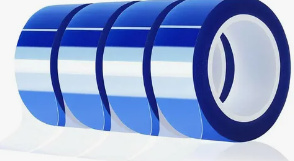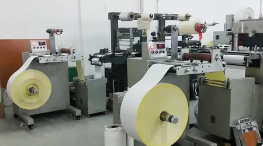When it comes to artificial operations, markers that can repel high temperatures are essential. In this composition, we will explore markers heat resistant to 600 degrees, their uses, benefits, and how to choose the right bones for your requirements.

Understanding Heat Resistant Markers
Heat-resistant markers are specifically designed to endure extreme temperatures. They’re used in colorful diligence, including manufacturing, automotive, and aerospace. Knowing the right temperature range is pivotal for effective labeling.
These markers can be made from several accouterments, including polyester and polyimide. The choice of material affects continuity and performance. Thus, understanding the parcels of these accouterments is important for opting for the right markers.
The Science Behind Heat Resistance
Heat-resistant markers are created using advanced accouterments that can handle high temperatures without demeaning. For case, polyimide is frequently used in operations that bear extreme thermal stability. This type of marker can maintain its integrity indeed at temperatures exceeding 600 degrees Fahrenheit.
Manufacturers frequently conduct rigorous testing to ensure these markers can repel prolonged exposure to heat. This testing is essential for diligence where safety and compliance are critical. As technology advances, the product processes of these markers continue to ameliorate, performing in better performance and trustability.
crucial Features of- -Temperature Markers
- continuity
- Temperature Resistance Can repel temperatures up to 600 degrees Fahrenheit.
- Chemical Resistance Resistant to colorful chemicals and detergents, which is pivotal in artificial settings.
- Weather Resistance Suitable for out-of-door operations where markers may face environmental challenges.
- Adhesive Strength
High-performance bonds ensure the markers stick well in extreme conditions, minimizing the threat of them shelling off.
- Long-lasting maintains adhesion over time, precluding shelling or fading that can compromise labeling information.
- Versatile Works on colorful shells, including essence, plastic, and painted shells, icing broad connection.
Customization Options
- Variety of Sizes Available in multiple sizes to fit different requirements, from small factors to large ministries.
- Color Choices Can be produced in colorful colors for easy identification and isolation of factors.
- Printability Suitable for custom printing, allowing for specific information like barcodes, periodical figures, and safety warnings.
Operations of Heat-Resistant Markers
- Markers toast resistant to 600 degrees find operations in numerous diligence. They’re used for labeling ministry, outfits, and products exposed to high temperatures.
- In the automotive sector, these markers are critical for relating machine corridors and factors. They give essential information indeed in extreme heat conditions, ensuring that mechanics can work safely and efficiently.
- In aerospace, markers help maintain safety norms. They identify pivotal factors and systems, ensuring everything runs smoothly. For illustration, markers are used on cables and connectors that might be exposed to high heat during operation.
Benefits of Using Heat-Resistant Markers
Using markers toast resistant to 600 degrees comes with several advantages. First, they enhance safety by easily marking hot shells and factors. This reduces the threat of accidents and injuries in the plant, fostering a safer terrain.
Alternatively, they ameliorate effectiveness by furnishing quick access to vital information. Workers can fluently identify ministry or outfit, saving time and trouble, which is critical in high-paced work surroundings.
Third, these markers ensure compliance with assiduity regulations. Proper labeling is frequently needed for safety checkups and examinations. For illustration, in manufacturing shops, clear labeling can help expensive crimes and enhance functional effectiveness.
Long- Term Cost Savings
Investing in high-quality heat-resistant markers can lead to long-term cost savings. While the original investment may be greater than that of standard markers, their continuity means smaller reserves over time. This is especially important in surroundings where markers are subject to extreme conditions.
Likewise, by precluding accidents and icing compliance, these markers can help avoid expensive forfeitures and liability issues. Companies that prioritize safety and effectiveness frequently see bettered hand morale and productivity, contributing to overall success.

Choosing the Right Heat Resistant Markers
When opting for markers, consider the following factors to ensure they meet your specific requirements.
Estimate Temperature Conditions
First, estimate the temperature range needed for your operation. Insure that the markers can repel the maximum temperature you anticipate. For illustration, in automotive operations, corridors can reach extremely high temperatures, and opting for a marker that can handle these conditions is critical.
Consider Environmental Factors
Factors like exposure to chemicals, humidity, or UV light can affect the marker’s performance. Markers used in out-of-door settings may need fresh UV protection, while those in chemical processing shops must repel detergents and acids.
Determine Customization Needs
Third, determine if you need custom markers. Customization allows you to include important information, similar to barcodes or safety warnings, which can be salutary. For case, a custom marker with a QR law can link to safety data wastes, making it easy for workers to pierce pivotal information on the spot.
FAQs About Toast Resistant Markers
What accouterments are heat-resistant markers made from?
Heat-resistant markers can be made from colorful accouterments, including polyester, polyimide, and vinyl. Each material offers different situations of heat and chemical resistance. Polyimide, for a case, is excellent for high-temperature surroundings, while polyester provides good each-around performance.
How do I know if a marker is suitable for high temperatures?
Look for markers specifically marked as heat resistant to at least 600 degrees Fahrenheit. Check the manufacturer’s specifications for details on temperature limits. Also, numerous manufacturers give test results that demonstrate the marker’s performance under extreme conditions.
Can I use heat-resistant markers outside?
Yes, numerous heat-resistant markers are designed for out-of-door use. They can repel exposure to sun and harsh rainfall conditions, making them suitable for colorful operations. Always corroborate if the marker has UV protection if it’ll be exposed to the sun for extended ages.
Are heat-resistant markers easy to apply?
Utmost heat-resistant markers come with strong bonds that ensure easy operation. Make sure to clean the face before applying for the stylish results. Also, numerous markers have a peel-and-stick design, simplifying the operation process indeed further.
How long do heat-resistant markers last?
The lifetime of heat-resistant markers depends on environmental factors and operation. Still, frequent exposure to extreme temperatures or harsh chemicals may dock their lifetime.
Differences Between Heat-Resistant Labels and Regular Labels
| Feature | Heat-Resistant Labels | Regular Labels |
| Temperature Range | Up to 600°F | Usually below 200°F |
| Material | Polyimide, Polyester, Vinyl | Paper, Basic Plastic |
| Adhesive Strength | High-performance adhesive | Standard adhesive |
| Chemical Resistance | High | Low to Moderate |
| Outdoor Durability | Designed for outdoor use | May not withstand elements |
| Customization Options | Available in various sizes/colors | Limited options |
conservation of Heat-Resistant Markers
Proper conservation can extend the life of your heat-resistant markers. Regularly check them for wear and tear and tear. However, consider replacing them, If you notice any shelling or fading. Routine checks can help you catch any issues beforehand, ensuring that markers remain comprehensible and effective.
Drawing and Care Tips
Cleaning shells before applying new markers is pivotal. Use applicable cleansers that don’t damage the glue or marker material. Avoid detergents that can degrade the glue, and rather conclude for mild cleansers.
Keeping track of any changes can help you identify when it’s time for relief. Regular conservation checks can help implicit accidents or misidentifications.
Common Diligence Using Heat-Resistant Markers
Several diligence calculations on markers toast resistant to 600 degrees. Understanding this diligence can help you identify your requirements and operations.
Inventions in Heat-Resistant Marker Technology
The technology behind heat-resistant markers is constantly evolving. Recent advancements have led to markers that are more durable and protean than ever ahead.
Bettered Accoutrements
Inventions in polymer technology have led to markers that can repel temperatures well above 600 degrees while maintaining their integrity.
Enhanced Bonds
tenacious technology has also bettered. Manufacturers are creating bonds that can repel extreme temperatures and environmental stressors, ensuring that markers remain fixed indeed in grueling conditions.
Eco-Friendly Options
likewise, sustainability has become a focus in marker manufacturing. Numerous companies are now offering eco-friendly options that don’t compromise on performance.
Case Studies Successful Use of Heat-Resistant Markers
Automotive Industry Example
. These markers not only handed vital information about part specifications but also resisted the extreme heat generated during operation. This led to a significant reduction in misidentification and an enhancement in overall assembly effectiveness.

Aerospace Application
A leading aerospace company used heat-resistant markers on wiring and connectors in aircraft. The markers assured that all factors remained identifiable during rigorous safety checks, enhancing compliance and safety in a largely regulated assiduity.
Food Processing Sector
In a food processing factory, workers used heat-resistant markers to mark outfits involved in cuisine processes. These markers remained complete through high temperatures and humidity, ensuring that safety information was always accessible to staff, thereby perfecting functional safety.
Conclusion
Choosing markers toast resistant to 600 degrees is pivotal for icing safety, compliance, and effectiveness in colorful diligence. By understanding their features, benefits, and operations, you can make informed opinions that meet your specific requirements.
Final studies
In summary, tenacious strength, and customization options make them suitable for a wide range of operations. By investing in high-quality markers, you ensure that your operations run easily and safely.
Be visionary in opting the stylish markers for your requirements, and don’t vacillate to consult with manufacturers for fresh guidance and recommendations acclimatized to your specific operations.

